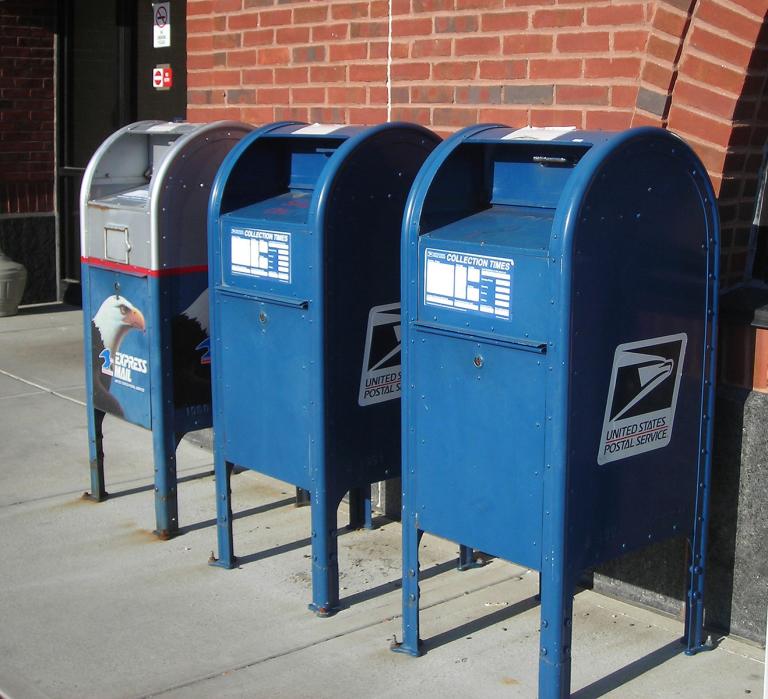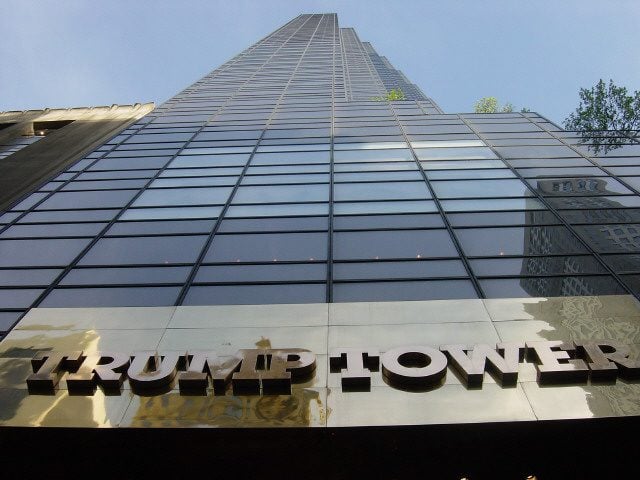
You know what I mean: the claims by the Left that the federal government is, variously,
- Defunding the Post Office,
- Locking up mailboxes, or removing them entirely, and/or
- Causing the entire postal system to collapse via mismanagement, in order to foil vote-by-mail plans, disenfranchise at-risk-of-covid voters, and steal the election for Trump?
With respect to the first, I will remind readers that the Post Office is meant to stand on its own two feet, rather than being a subsidized government agency. (You can read more of my thoughts on this and throw me some page-view love at Forbes, where I also quote Trump extensively to refute claims that he openly acknowledged trying to “sabotage the Post Office.”) Calls to fight against “defunding the Post Office” simply make no sense, yet this is the new rallying cry, even at the virtual Democratic Convention last night: “And now he is putting the lives of Nevada’s seniors at risk by trying to defund the post office. Here’s what that means: they won’t be able to get their prescriptions, because he wants to win an election.” An activist group called Social Security Works is aggressively trying to tie the two programs together, for example in a tweet in which they say, “The Post Office and Social Security are the two most beloved government programs in the US.”
What’s more, postage rates in the US are actually considerably lower than other Western countries — in the German Postal Agency’s comparison, we are near the bottom compared to EU countries; ahead only of Cyprus and Malta. The average rate is EUR 1.12, or USD 1.37. You get what you pay for, and limiting stamp price increases to the rate of inflation while volume declines and wages increase is a recipe for increasing service delays, with the only question being whether mail is slow but consistent or slow and unreliable.
What about locking up mailboxes?
Yes, that’s a hoax.
A twitter account with the handle @RexChapman posted a picture of locked mailboxes, calling it “a disgrace and immediate threat to American democracy,” and got 46,600 likes and 24,800 retweets. The reality is that the mailboxes were locked to prevent theft, a growing problem which was reported on in 2016.
Another account “went viral” with a picture of a pile of mailboxes, claiming, “they are sabotaging USPS to sabotage vote by mail.” 128,400 likes, 82,800 retweets. The reality, according to journalist Gary He, is that this is a photo of a company with a government contract for refurbishing mailboxes; He calls out Reuters, which provided these images without this relevant context.
What about the larger changes in the works at the USPS, the prohibition of overtime, the practice of leaving mail to wait until the next day?
Byron York at the Washington Examiner provides the explanation:
Whatever its other concerns at the moment, the Postal Service does have chronic financial problems. This year, Trump chose DeJoy, who made a fortune in shipping and logistics and whose former company was a contractor of the Postal Service for many years, as the new postmaster general. (DeJoy is also a major donor to Republicans and the Trump campaign.) DeJoy has attempted to deal with some of the Postal Service’s systemic problems with a pilot program to make deliveries more efficient while reducing the Postal Service’s crippling overtime costs, which added up to more than $1 billion in fiscal year 2018.
In the past, postal delivery worked this way: A worker would arrive in the morning and work on various things in the office — sorting mail, handling holds on mail, waiting for incoming mail to arrive to prepare for delivery. That often involved waiting around for hours and then starting an actual delivery route later in the day. Once started, a route has to be finished, and that involved workers going into overtime as they delivered through their route as evening approached.
DeJoy’s plan, now being implemented in a pilot program in about 200 cities, is called Expedited to Street/Afternoon Sortation, or ESAS. Under it, a worker would arrive in the morning, collect all the mail that was ready to go out, and head out for delivery — “retrieve, load, and go.” Then, after finishing the delivery route, the carrier would return to the office and do in the afternoon the office work that used to be done in the morning. That way, when the end of his or her shift arrived, that would be the end of the workday, with no overtime incurred. Mail that arrived to the office in the afternoon, while the carrier was doing office work, would be delivered in the next morning’s route. It would be ready and waiting when the carrier arrived for “retrieve, load, and go.”
The effect to customers would be that mail that was delivered to the office in the afternoon would be delivered the next morning, instead of that evening. The effect to the Postal Service would be to save an enormous amount of money in overtime.
This does not sound particularly nefarious to me. It sounds instead like a matter of saving a lot of money, at the cost of half a day’s average delay in mail delivery. (Could the same result be achieved by having workers start their shift in the afternoon? I suppose, but then you’d take the 9 – 5 workday away from the workers.)
Over at Reason, Nick Gillespie observes that the Post Office processes such a monumental amount of mail (even still, in our internet age, just less than in the past) that “even if all voters used the mail and posted their ballots on exactly the same day, that would comprise only 30 percent of the amount of mail the USPS says it processes every single day.” (Politico and Nick Harper writing at Medium also try to dial down the panic.)
But that didn’t stop Chicago’s own Mayor Lightfoot from jumping into the fray:
Mayor Lori Lightfoot cast President Donald Trump and Republicans as “enemies of democracy” who are mounting a “full-out assault” on the integrity of the November election by undermining the U.S. Postal Service and making it more difficult for people to vote by mail amid a pandemic. . . .
“Every day the importance of this fall’s election grows and grows, and every day, unfortunately, we see increasing evidence that this administration is mounting a full-out assault on every pillar of our democracy, including the integrity of our elections,” Lightfoot said. “This is real, folks. It’s not an exaggeration. It’s not a conspiracy theory.” . . .
“That’s why we cannot allow this administration to undermine the Postal Service in a way that is clearly trying to drive the Postal Service to its knees, making mail service unreliable — putting postal workers at risk by changing hours and stretching into the night and failing to give the post office the resources that it needs to fulfill its basic mission,” Lightfoot said. “This assault, of course, is about election integrity.”
This is nonsense. But this sort of demagoguery — asserting not that “there’s only you and me and we just disagree,” but “my opponent is an enemy of democracy,” is dangerous. If Trump should win, what kind of chaos will be unleashed by people who have been primed to believe that this was the result of election interference, that Trump had cheated? And, yes, I know that Trump is stoking fears of fraudulent mail-in voting, and, to be honest, I am likewise concerned about fraud and mismanagement by entities that don’t have experience, don’t take care with their voter rolls, etc. — and to go from mailing out absentee ballots upon request, to sending a ballot to everyone who is on the rolls, is a huge step which requires, well, a substantial degree of competence. But there’s a difference between raising concerns, and generating hysteria simply to demonize your opponent — and the latter is the true “assault on our democracy” when it sets us up for a malfunctioning political system, riots and looting in the streets, and worse.
Image: https://commons.wikimedia.org/wiki/File:USPS_mailboxes.jpg; EraserGirl / CC BY (https://creativecommons.org/licenses/by/2.0)













